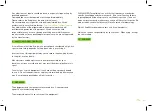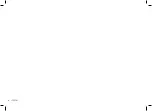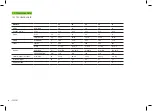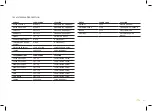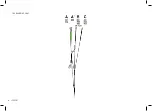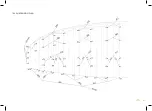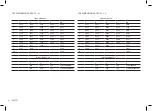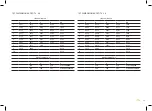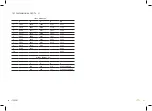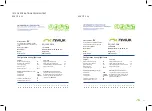
12
corrective manoeuvres to use are the same as those applied in case of
an asymmetric collapse: control the turn/spin by applying tension on the
opposite brake and weight shift opposite to the turn. Then locate the 3STI
stabilo line (attached to the wing tip) trapped between the other lines. This
line has a different colour and is located on the outside position of the
B-riser.
Pull this line until it is taut. This action will help to release the cravat. If
ineffective, fly down to the nearest possible landing spot, controlling the
direction with both weight-shift and the use of the brake opposite to the
tangled side. Be cautious when attempting to undo a tangle while flying
near terrain or other paragliders; it may not be possible to continue on the
intended flight path.
Over-controlling
Most flying problems are caused by wrong pilot input, which then
escalates into a cascade of unwanted and unpredicted incidents. We
should note that the wrong inputs can lead to loss of control of the glider.
The KOYOT 4 was designed to recover by itself in most cases. Do not try
to over-correct it!
Generally speaking, the reactions of the wing, which are caused by too
much input, are due to the length of time the pilot continues to over–
control the wing. You have to allow the glider to re-establish normal flying
speed and attitude after any type of incident.
4.3 ACCELERATED FLIGHT
The KOYOT 4 ’s profile was designed for stable flight throughout its entire
speed range. The speed-bar can be used in strong winds or significant
sink.
When accelerating the wing, the profile becomes more sensitive to
turbulence and closer to a possible frontal collapse. If a loss in internal
wing pressure is felt, tension on the speed-bar should be reduced to a
minimum and a slight pull on the brake lines is recommended to increase
the wing’s incidence angle. Remember to re-establish the air speed after
correcting the angle of attack.
It is NOT recommended to accelerate near obstacles or in very turbulent
conditions. If necessary, constantly adjust the movements and pressure
on the speed-bar whilst doing the same to the brake lines. This balance is
considered to be ‘active piloting’.
4.4 FLYING WITHOUT BRAKE LINES
If, for any reason at all, the KOYOT 4’s brake lines become disabled in
flight, it will become necessary to pilot the wing with the C-risers and
weight shifting until landing. These risers steer easily because are not
under significant tension. You will have to be careful and not handle them
too heavily in case this causes a stall or negative spin. The wing must
be flown at full speed (not accelerated) during the landing approach, and
the C-risers will have to be pulled symmetrically all the way down shortly
before contact with the ground. This braking method is not as effective
as using the brake lines, and hence the wing will land with a higher
ground speed.
4.5 LINE KNOT(S) IN FLIG
The best way to avoid knots and tangles is to thoroughly inspect the lines as
part of a systematic pre-flight check. If a knot is spotted during the take off
phase, immediately abort the launch sequence and stop.
If inadvertently taking off with a knotted line, the glider drift will need to be
compensated by weight-shifting to the opposite side and applying a slight
brake pull to that side. Gently pull the brake line to see if the knot can be
undone or try to locate the problem line. Try pulling it to see if the knot can
be undone. Beware of trying to clear a knotted line or untangle a line in flight
when close to the terrain. If the knot is too tight and cannot be undone,
carefully and safely fly to the nearest landing zone. Be careful: do not pull too
hard on the brake handles because there will be an increased risk of stalling
Summary of Contents for KOYOT 4
Page 1: ...KOYOT 4 User s manual...
Page 18: ...18...
Page 19: ...19...
Page 22: ...10 3 RISERS PLAN 22...
Page 23: ...10 4 SUSPENSION PLAN 23...
Page 29: ...niviuk com...

















